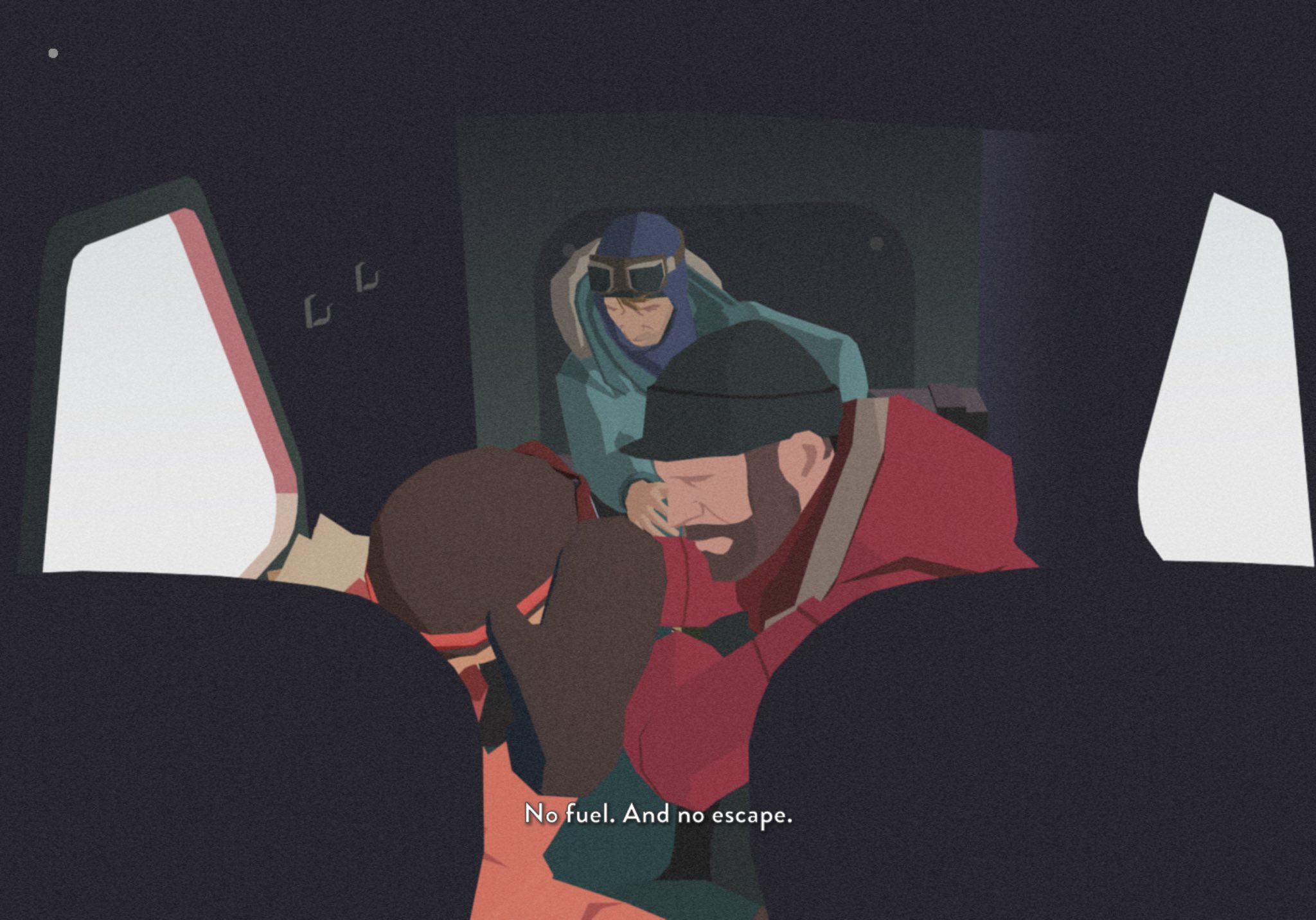It is almost a guarantee that if you fuck up in Antarctica, especially away from any of the populated outposts, you won’t make it back to the world alive. In that way, the bottom continent is like its own planet. This concept has been explored in literature, films and video games to varying degrees of success. One game that got me particularly good was 2016’s Near Death by Orthogonal Games. A pilot crashes and finds themselves stranded at an abandoned research station with limited resources and no time before a massive winter storm blows in, promising a freezing death. Spoilers ahead for South of the Circle.
South of the Circle, State of Play Games’s latest game for Apple Arcade, also begins with a plane crash in the coldest, driest place on Earth. The pilot has broken his leg and you must guide the passenger, Dr. Peter Hamilton, to a nearby British outpost to send for help.
Only the outpost is deserted. So is the Soviet one further north. And the Norwegian one. Every researcher, soldier and possible spy on the continent as up and vanished, and we have no idea why. At the British outpost, we find notes and seismic data that note tremors that are getting closer. At a Soviet base, a map. At the Norwegian camp, two graves. These sparse items in the environment are all very suggestive, and suggestion is really what drives the narrative here.
Interspersed between segments of directing Peter to trudge or drive a snowcat through the snow are flashbacks to moments in his life as a struggling climatologist and University of Cambridge lecturer. We watch him find friendship, and then collaboration, and then eventually love, with Clara, a fellow lecturer. She helps him nail down a direction for his thesis, provides him with a secluded place to get original readings recorded, and even co-writes the paper with him.
It’s the early 1960s. The Cold War has firmly set in. Fear of the Soviet Union has overtaken all British institutions, including Cambridge, as anti-nuclear proliferation protests begin. Clara is friends with Molly, yet another lecturer, who also leads one of the campus anti-nuclear groups. Molly gets arrested for allegedly being a Soviet spy. Suddenly, Peter’s relationship with Clara is called into question.
Returning to the harsh ice and snow of the Antarctic continent, the line between Peter’s memories and the real world is starting to blur. His flashbacks bleed into reality in unsettling ways, like the sudden appearance of a British street in the snow, or an entire amusement park materializing out of the fog. Everything is lovingly rendered in what I could only call screenprint-esque rotoscoped art, but this loving attention only adds to the surreality of some scenes. Faces are never fully detailed, and in fact can disappear entirely at times, adding to the effect that this is all in Peter’s imperfect recollection of events.
As you play, certain scenes compel you to make heuristic choices that return over and over again later, such as a decision to refer to yourself as “Dr. Hamilton” or say “promise you that.” You return to some scenes repeatedly, where you are depicted making the same choice over and over again, the one you decide is the ethically correct one, and as the story progresses you wonder why and how you got here, to Antarctica, if you really stuck to your guns like this.
South of the Circle is playing with some Big Ideas in a very atomized, individualist fashion. Most of the characters, including Peter and his Professor, are flawed archetypes of specific ideals. Peter is a paragon of upright scholarship to a fault, having spent three years prior to the first flashback toiling away on the perfect angle to start his paper on predicting cloud movements. His Professor represents the Old Guard, outdated and harmful ideas on women and their place in academia – and very much contemporary and oppositional ideas on socialism – and all. Clara is a window into modernity, though she skews less radical than Molly. Peter’s two colleagues are toxic masculinity incarnate – one colleague, an inveterate womanizer; the other, the consummate enabler.
There is no room for this archetypicality in Antarctica. Every time Peter is slammed back into the reality he faces, a bit of the life he is remembering – or has been misremembering – is stripped from him. At one point, a Soviet engineer joins the party, not by choice but by circumstance. He conveys just how dire their situation is and then helps Peter and his pilot fix the plane. Peter is sent out once more into the snowy white to get fuel, but collapses in the snow on his way back. The end is ambiguous as to whether the trio survive. It’s better this way.






